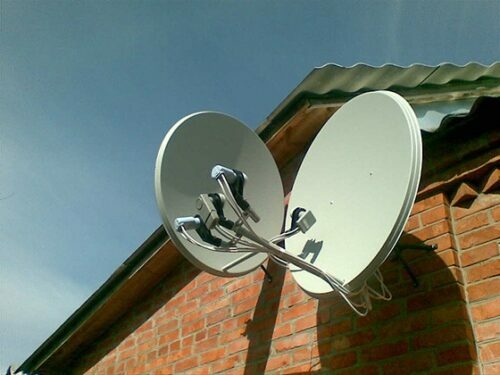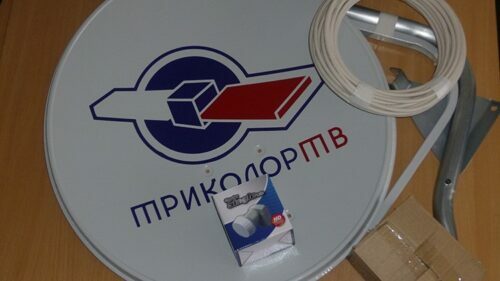Women, probably, are never satisfied with their appearance. Those who have hair straight from nature, dream of chic locks, and owners of violent curls certainly want to straighten them. However, the latter is easy to understand: curly small strands of hair are often disobedient. And no serums and balms without a good rectifier with them can not cope.
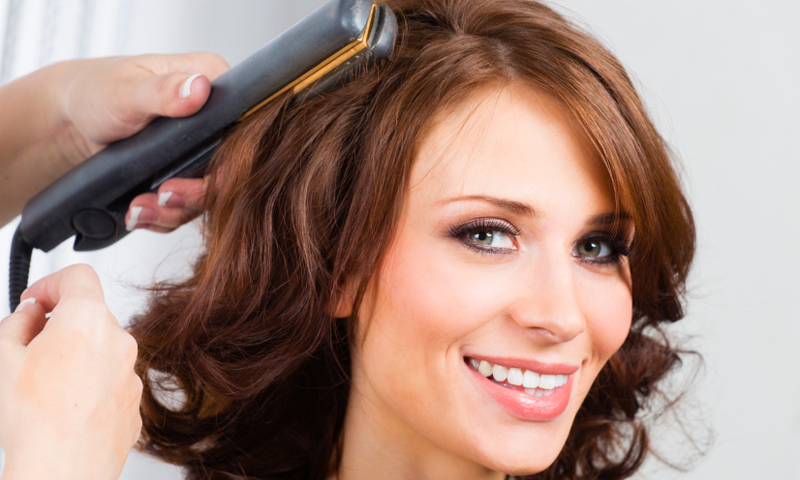
Contents:
- The best manufacturers of hair straighteners - which company to choose
- How it works and the device for hair straighteners
- Types of hair straighteners
- Options for choosing a hair straightener
- What hair straightener to choose
- How much does the hair straightener
? The best manufacturers of hair straighteners- which firm to choose
Despite the narrow scope, rectifiers are very popular and are produced by many manufacturers of small household appliances. Each of them tries to stand out against the background of competitors, here and there are on the shelves of a variety of models of straightening combs, irons and even nozzles for hair dryers.
The best products of such a plan are produced by the Italian company Ga. Ma, but there are other manufacturers that make high-quality equipment:
- Babyliss;
- Philips;
- Braun;
- Rowenta;
- Valera.
In our rating you can learn more about the best rectifiers of these brands and even find the right model for yourself. But before you go for a purchase, it is worthwhile to figure out what parameters and characteristics of devices you need to pay attention to.
Principle of operation and the device of hair straighteners
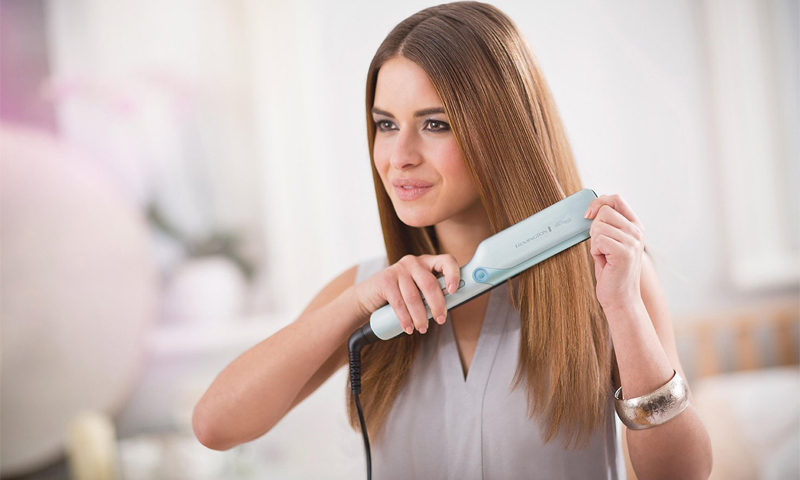
The lion's share of hair straighteners is presented in the form of ironing, although outwardly they are more like wide pincers with flat heating plates. They need to clamp each curl and smooth it along the entire length. Inside the handle-case there is a thermostat, which sets the maximum heating temperature, as well as other types of protection that do not allow overheating of the ironing.
"Dry" rectifiers are very effective, but they work quite aggressively. The high temperature of the plates and the simultaneous smoothing of the tongs make it possible to straighten the locks literally in one pass.
In the process of heating, excess moisture evaporates from the rods, or rather, hydrogen compounds, which cause the hair to curl in rings. Have you noticed how your curly hair rises in wet weather? That's how the excess water spins the strands - with it and fights the hot iron.
A similar principle of operation for an electric comb-rectifier. Here too, excess moisture is expelled from the curls, only the heating and mechanical alignment are already performed not by plates, but by red-hot metal teeth.
Steam rectifiers work like ordinary ironing, but hot steam does not only affect the hot surface of the forceps. Such models less damage the structure of the rods and therefore allow daily use. And you can find out by the holes on the plates and a small container with water, which is located on one of the paws of the forceps.
Types of hair straighteners
Standard rectifiers-ironing

The most popular and simple type of technique for straightening hair. We considered its structure and principle of operation above, without touching the main thing - the material of the manufacturing( or coating) of the heating plates.
For example, metal forceps are not the best choice, as they are heated unevenly and can burn the hair. But tourmaline and ceramic smoothly smooth the curls right across the width and even in their own way take care of your hair.
Pros:
- Convenient to use;
- High heating temperature speeds up the laying process;
- Large selection of models with plates of different materials;
- The effect of straightening can last for several days;
- Most modern ironing machines already come with a useful ionization function;
- Presence of a thermostat for selecting the appropriate mode;
- Straighteners with narrow plates can make original curls in shape.
Cons:
- With frequent use, the hair begins to split;
- Good ironing with a gentle coating is expensive;
- Do not use on wet hair.
Steam irons
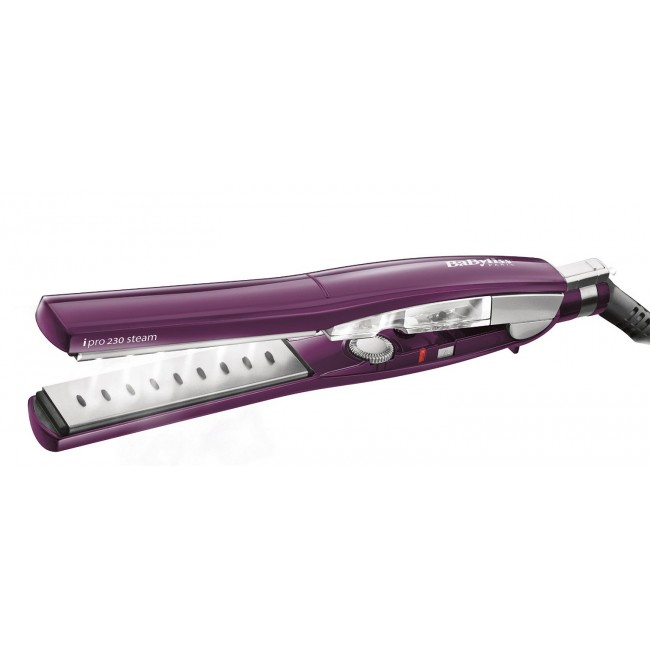
These are the same forceps, but with a different version of the legs. On one of them there are holes through which steam is supplied( water is poured into the built-in small reservoir).Due to the lower temperature, such ironing do the least damage to the hair, but it works no less effectively.
Pros:
- Ability to select the appropriate temperature mode;
- Some models come with denticles that provide efficient straightening;
- Do not damage the hair;
- Steam makes the curls smooth and shiny;
- You can use it every day.
Cons:
- Expensive unit;
- Only purified softened water is suitable for refilling.
Multistaires
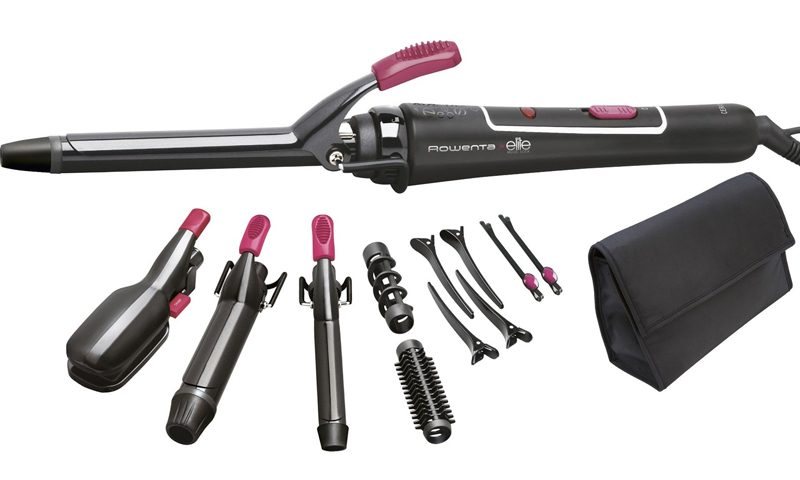
This is not exactly a rectifier, although this possibility is also provided in the multifunctional device. In the kit to the styler there is always a whole set of baits: ironing, a round hairbrush, several kinds of plaques.
All of them are alternately put on the handle-base, allowing you to do any laying on both straight and curly hair. Such a universal technique will appeal to amateurs to change their image often.
Pros:
- Fast and uniform heating;
- Many baits for experiments with styling;
- Straightening plates usually come with a ceramic coating;
- In most cases it is completed with a mat for cooling and a bag for transportation.
Cons:
- Absence of thermostat;
- High cost;
- Pretty dense forceps - thin hair can get stuck in them.
Comb-Rectifier
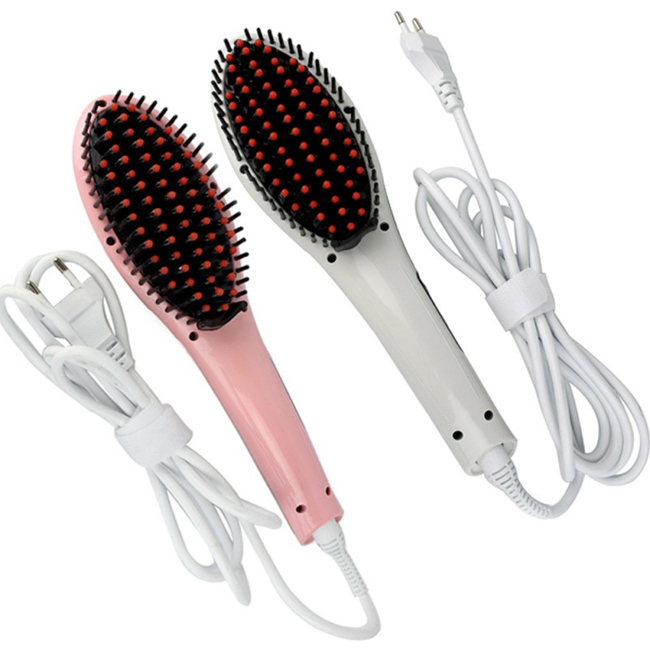
A somewhat unusual, but convenient unit has recently been in great demand. It has the appearance of a familiar massage comb with metal teeth, the ends of which have protective rubber pads( in order not to burn the scalp inadvertently).
When plugging in the mains, the prongs are heated, and you, by brushing hot hair in the curls, comb them and pull them together. Such an instrument inflicts minimal harm to the head of hair, but only cope with weakly curling strands.
Pros:
- Simplicity and ease of use;
- Decent service life;
- Respect for hair;
- Aligns the curls from the roots, at the same time giving the hair volume;
- No plates, so the mechanical effect is more gentle.
Cons:
- Can not cope with violent curls.
Parameters of choosing a hair straightener
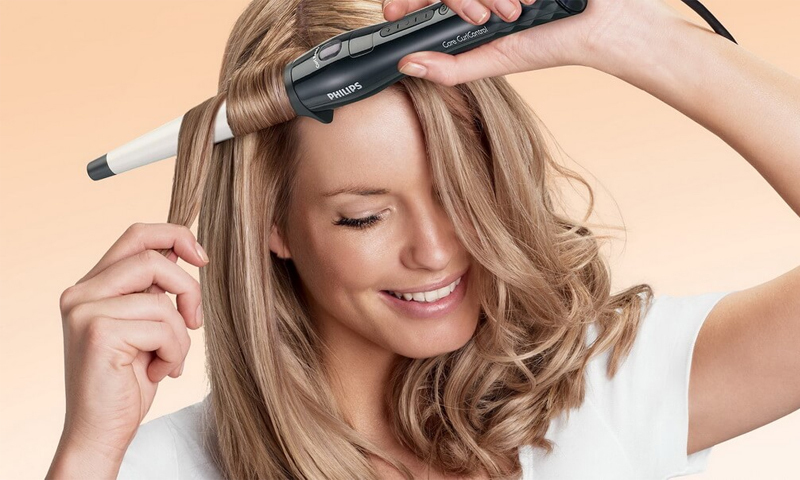
Type of plates
It is this parameter that determines the cost of the device, the convenience of its use and even the lifespan. But the main thing - the quality of the heating plates depends on the health of your hair.
1. Metal
It is considered the most harmful. They are heated unevenly, and therefore it is necessary to conduct ironing through the locks several times in order to achieve the desired effect. Such rectifiers are cheaper than others, but experts do not recommend them for frequent use. In extreme cases, you can choose a budget model with an anodized coating - it is more sparing.
2. Ceramic
Today it is the most popular material for the manufacture of rectifier plates. This coating treats the hair carefully, it evenly heats up and ensures perfect straightening of the curls along the whole width. It also perfectly "gets along" with the thermostat, obediently maintaining a constant temperature, and also makes the hair smooth and shiny.
Negative aspects of ceramics are few. The only drawback is the adherence of cosmetics for laying on the surface of the plates. Therefore, after each use, the device should be cleaned with a damp cloth.
3. Teflon
Irons with "non-stick" coating are very gentle to the hair. Experts recommend using such rectifiers for weak and soft hair. Gliding, like the result, is flawless here, but there are also disadvantages. The thin Teflon layer is erased over time, and the continued use of such ironing can seriously damage the hair.
4. Marble
Another harmless version of the pliers for leveling hair. Marble coating has properties similar to ceramics and Teflon spraying, but it has its advantages.
Such ironing features an ideal slip and an easy effect of cooling the hair after exposure to high temperatures. Most often, the marble coating is performed on one of the two ironing plates.
5. Turmalinovye
Even more high-quality material, superior in its properties, even marble. This coating can often be found in professional models of rectifiers. During the laying, tourmaline plates release negative ions, which neutralize static electricity and heal hair.
6. Titanium and diamond
The most expensive and durable type of ironing for leveling. They gently but effectively smooth the hair, practically without damaging their structure, while they themselves are not too demanding in the care. But for home use such an expensive purchase is not needed, even if you do the styling every morning. This is a technique for beauty salons.
Width of plates
The size of the ironing should be correlated with the density and length of its hair. Wide plates up to 8 cm are best suited for straightening thick and long curls. With them you will quickly cope with the styling. For short and medium-sized strands, a small width of 2.5-4 cm will suffice.
Power and temperature mode
Rectifiers, unlike hair dryers, do not need high power, so most ironing is produced with a consumption of 20 to 110 W, but also50 watts for work they have enough. The only thing to remember about: the lower the power of your device, the longer it will be heated. The temperature does not depend on this parameter - it is set by the built-in thermostat.
In good semi-professional ironing hair can be implemented from 3 to 6 temperature modes - for use in the home it is enough. The thermoregulator itself, responsible for their switching and support, is usually located on the rectifier handle.
Depending on the model, you can select the mode from +140 to +230 ° C.The temperature is set taking into account the state of the hair( the degree of damage, brittleness and structure of curly ringlets).
If the strands are thin and already with the ends marked, select the minimum values within +140. . + 170 ° С, for normal hair about +180 ° С.And for the most disobedient, hard and strongly curly - the maximum temperature of +200. . + 230 ° C.
Ionization function
This option is not considered mandatory, but since the thermal effect on the hair during the laying is quite aggressive, it is better to still look for the ionization model.
Such ironing comes with a special coating of plates, which, when heated, releases negative ions, restoring the inner balance of the hair. As a result, curls, even with daily styling, preserve a healthy appearance. In addition, the ionization function removes static tension, and after styling you will not look like a dandelion.
Which hair straightener to choose
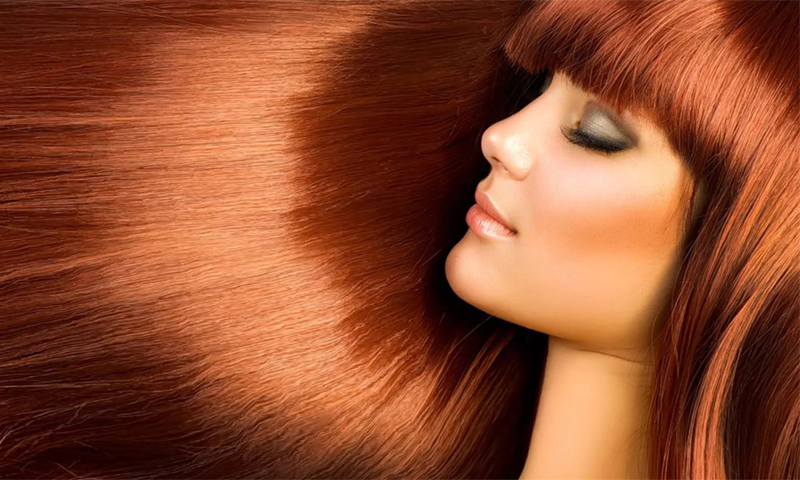
1. The holders of long and strongly curly hair are suitable straighteners with wide plates - at least from ceramics. They allow you to capture large strands, reducing the time of packing, and do the least harm to the hair.
2. If you have a short or medium hairstyle, look for an iron with narrow plates. You can take anodized steel or a Teflon-coated model. Such forceps are suitable for a curling curl, and will also be convenient when working with a bang.
3. For girls with thin and brittle hair steam rectifiers with ceramic, marble or tourmaline plates are suitable. The possibility to set the low-temperature mode and the ionization function are mandatory.
4. Do you like to change your image often, experimenting with styling? Take a functional styler with different attachments.
5. If your hair is just slightly curly, and you want to try a smooth hairstyle, buy a comb-straightener. We can not expect miracles from it, of course, but it will provide you with a neat packing.
How much does the hair straightener
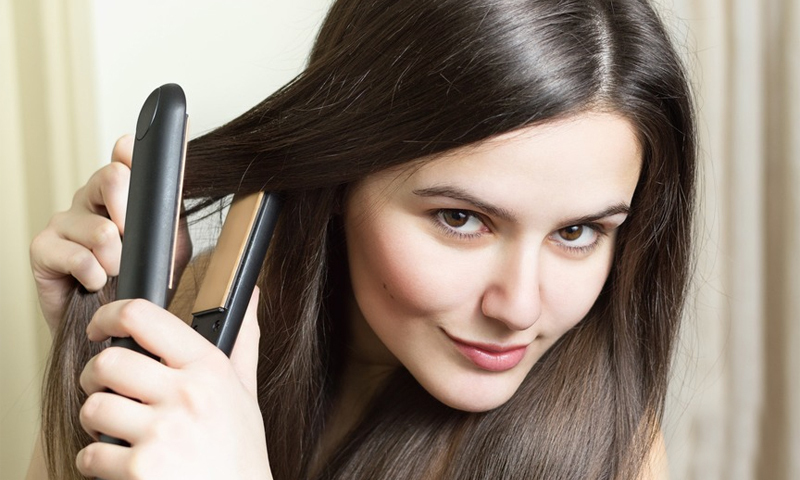
1. Standard ironing with metal plates are inexpensive - from 200 to 600 rubles.
2. Models with ceramic, Teflon or titanium iron are professional, so the prices for them range from 2 to 18 thousand rubles. Steam appliances also fell into this category, only the entrance threshold is slightly lower - at the level of 1000 rubles.
3. A good rectifier with tourmaline coating and ionization effect will cost in the amount of 2800-10000 rubles.
4. A quality styler can not cost less than 2000-5000 rubles, although there are also budget models in the range of 350-1000 rubles, but they are not for daily use.
5. The comb-rectifier can be bought at a price from 500 to 3500 rubles - depending on the manufacturer and the quality of the materials used.

